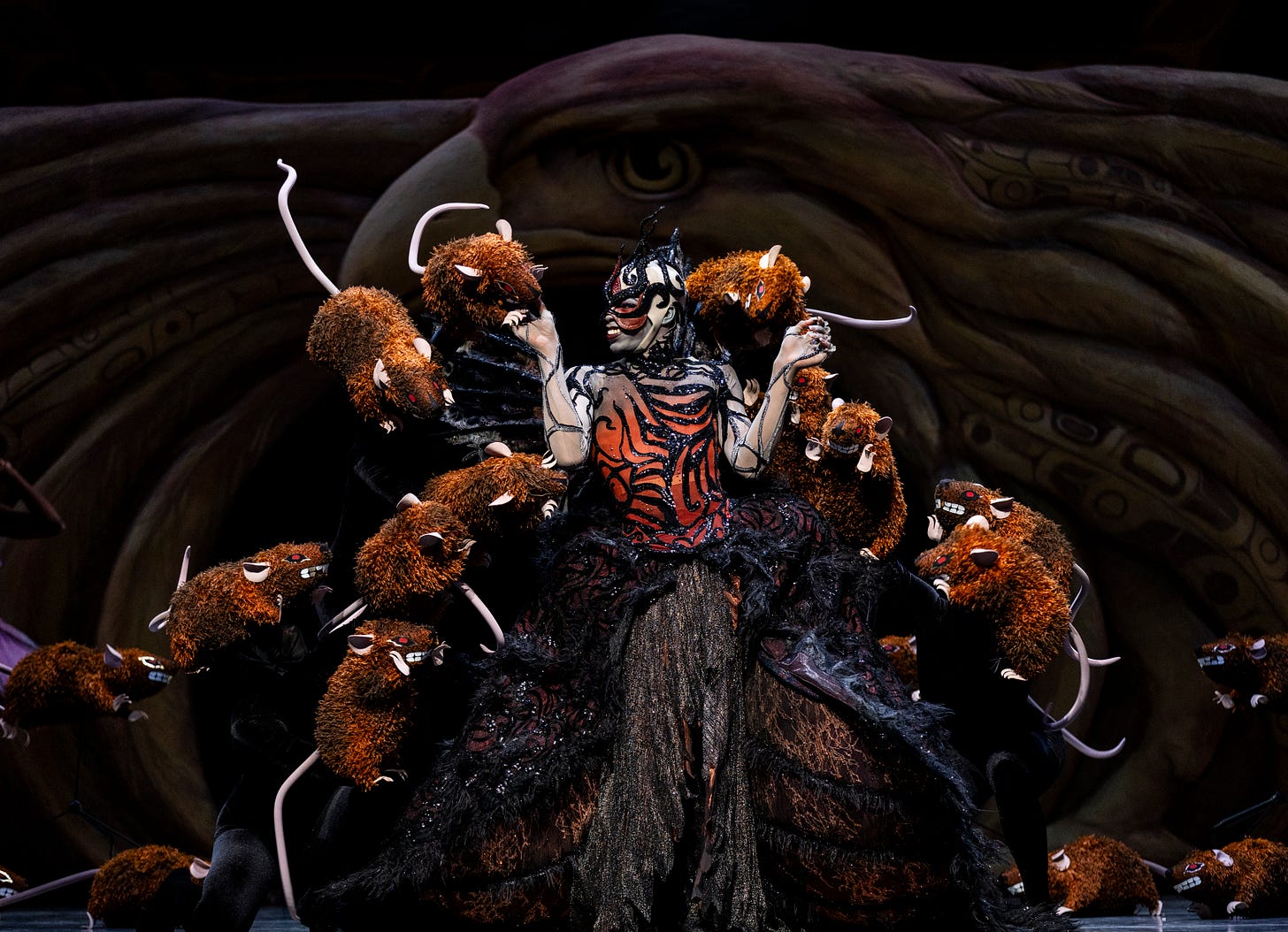
I was sitting in Seattle’s McCaw Hall lobby Saturday afternoon waiting for my date to arrive for Pacific Northwest Ballet’s new production of The Sleeping Beauty when a smiling, middle-aged woman sat down next to me.
She was waiting for her son to arrive, she told me. This would be the only ballet she’d ever taken him to, apart from PNB’s annual Nutcracker. “I had to come”, she said when we started to discuss the upcoming performance. “Everywhere I looked I saw ads for the show.”
True that.
PNB spent more than $4.3 million on this newly “refreshed” version of Marius Petipa’s 1890 chestnut; half of that went to the opulent costumes alone. Of course PNB had to ensure that the greater world knew what was on tap, so we saw billboard ads, social media posts plus a few news features in what are now referred to as legacy media.
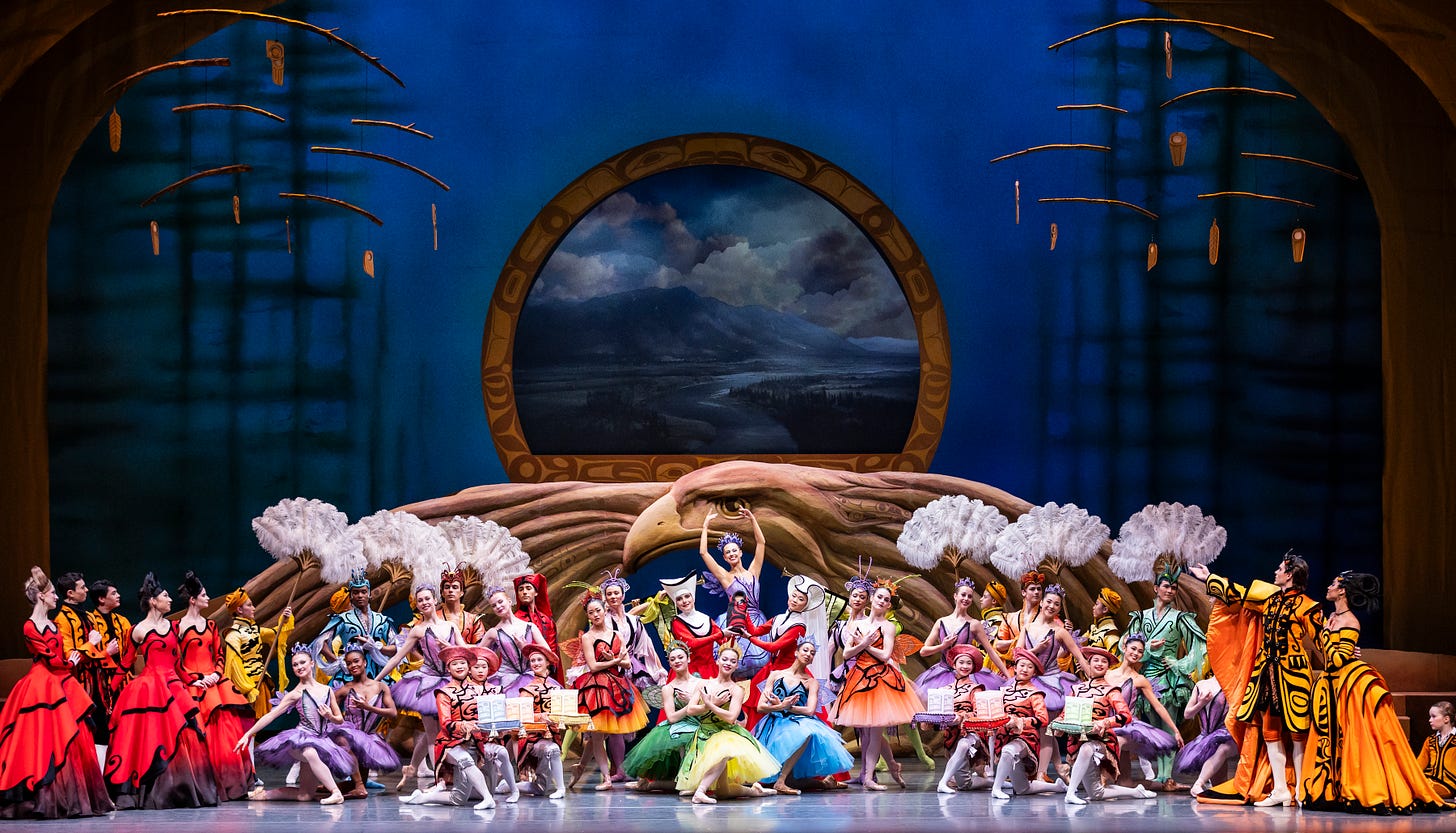
Thank me or blame me. I’ve written more than my share of musings and articles about the ballet, which I hadn’t seen since PNB last trotted out its Ronald Hynd version in 2019. This new production features award-winning designer Paul Tazewell’s flamboyant and colorful costumes and internationally known glass artist Preston Singletary’s sets and props influenced by his Tlingit heritage. I was definitely curious to see if and how the ballet had changed.
My main memories of The Sleeping Beauty were of the seemingly random but charming fairy tale characters who somehow wind up at the big wedding, and of Carabosse, the fairy who didn’t make the guest list for the baby Princess Aurora’s christening.
I’m sure I’ve said this at least 100 times but it bears repeating: I’m not the biggest classical story ballet fan. Yes, I’ve warmed up to some of them—particularly PNB’s Giselle, in part because it features one of my favorite ballet bad ass characters, Myrtha. And while this new Sleeping Beauty production has been streamlined from four acts to two and shortened probably by at least 30 minutes, it’s still the same fairy tale and I still find myself gravitating to both the wedding attendees and Carabosse.
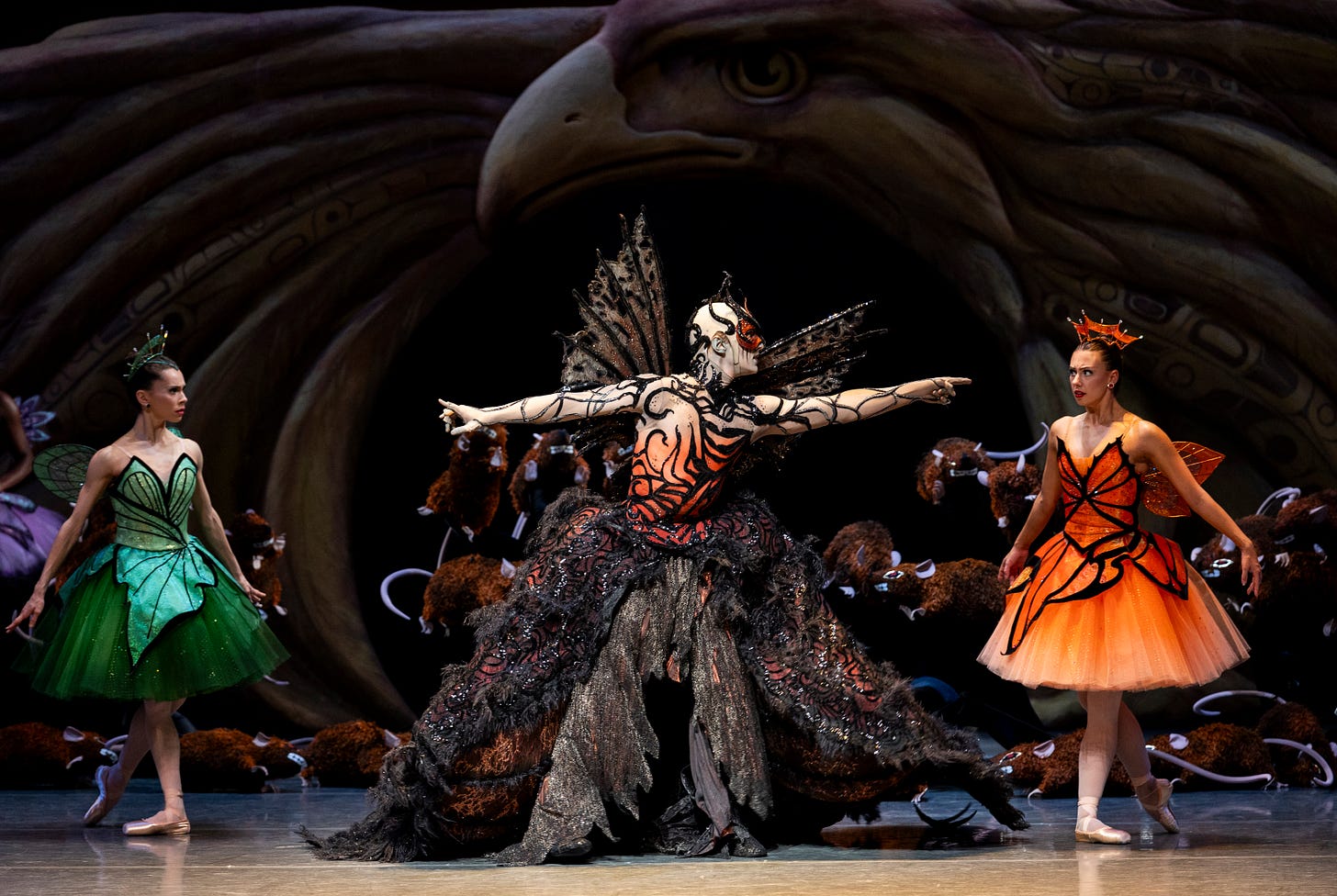
Oh Carabosse! Reframed in PNB’s new production, the fairy isn’t “evil,” they’re merely grumpy because they weren’t invited to the christening., albeit grumpy enough to wish the baby Aurora would prick her finger on a spindle and die. Luckily for Aurora, the Lilac Fairy is there to counter Carabosse’s hex; instead of a mortal wound, Aurora and her kingdom will merely fall into a 100-year slumber that can only be broken by her true love’s kiss, which comes close to the beginning of Act 2 in this production.
In the performance I saw (Saturday Feb. 1 matinee), the wonderful Leta Biasucci and Lucien Postlewaite were cast as Aurora and Prince Desire. Able Juliet Prine wielded a powerful wand and megawatt smile as the Lilac Fairy, but Zsilas Michael Hughes held me in the palms of their hands as a terrific Carabosse. Lovely Lilac was no match for this Carabosse, even if her spell spared Aurora’s life.
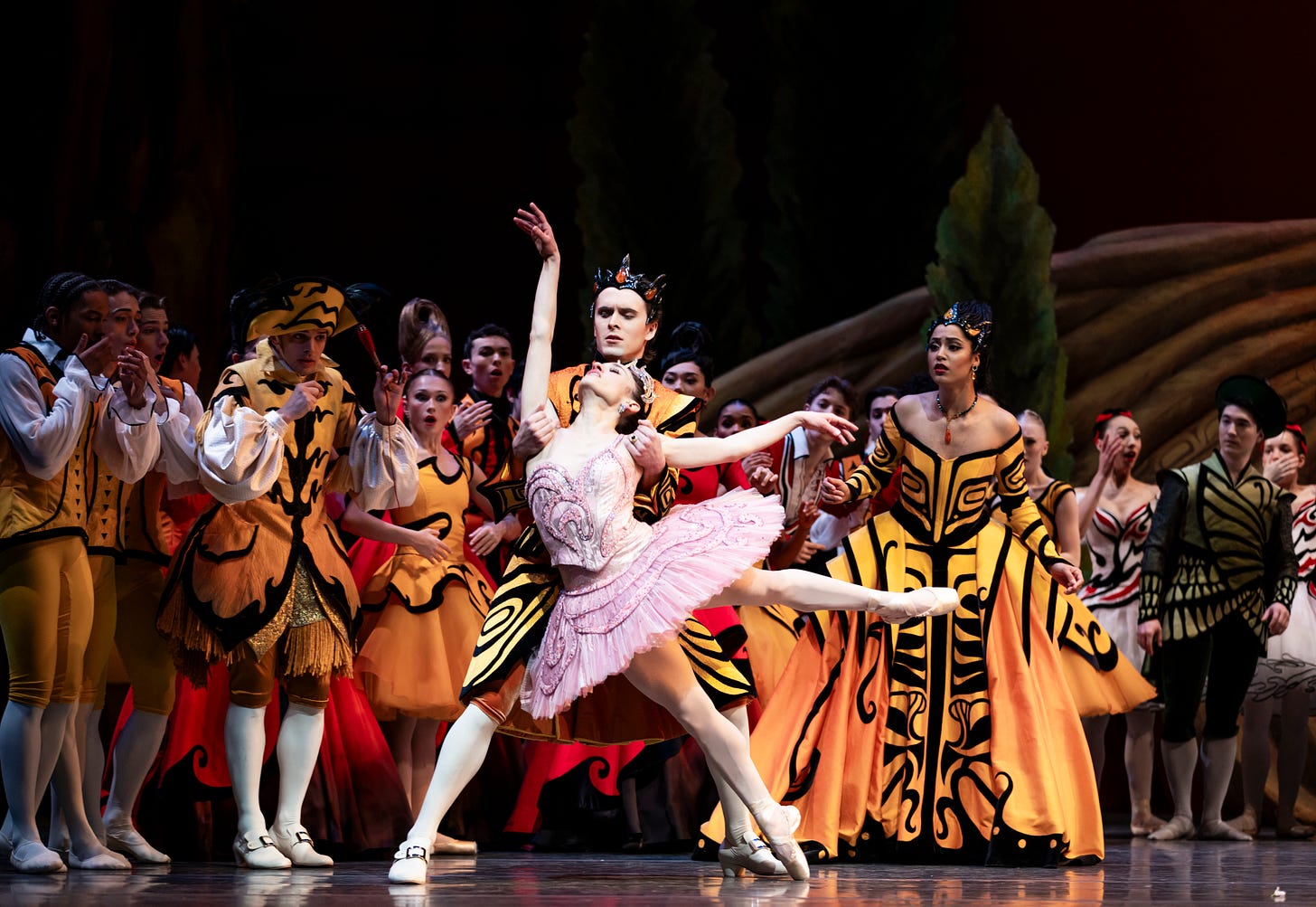
I don’t know the original choreography all that well but I’m pretty certain it doesn’t call for Carabosse to swish onstage with a coterie of rodents circling malevolently in the air. (All props to puppet maestro Basil Twist and the dancers who put the mice in motion). Their entrance is a literal swirl of chaos, but it was Hughes’ dejected shrug that showed the disappointment of not being invited to the party, the flick of all five fingers that communicated their response to being overlooked, that put me under a spell. I LOVED this Carabosse, and unfortunately Prine’s good fairy just wasn’t as powerful as Hughes’ less than savory Carabosse.
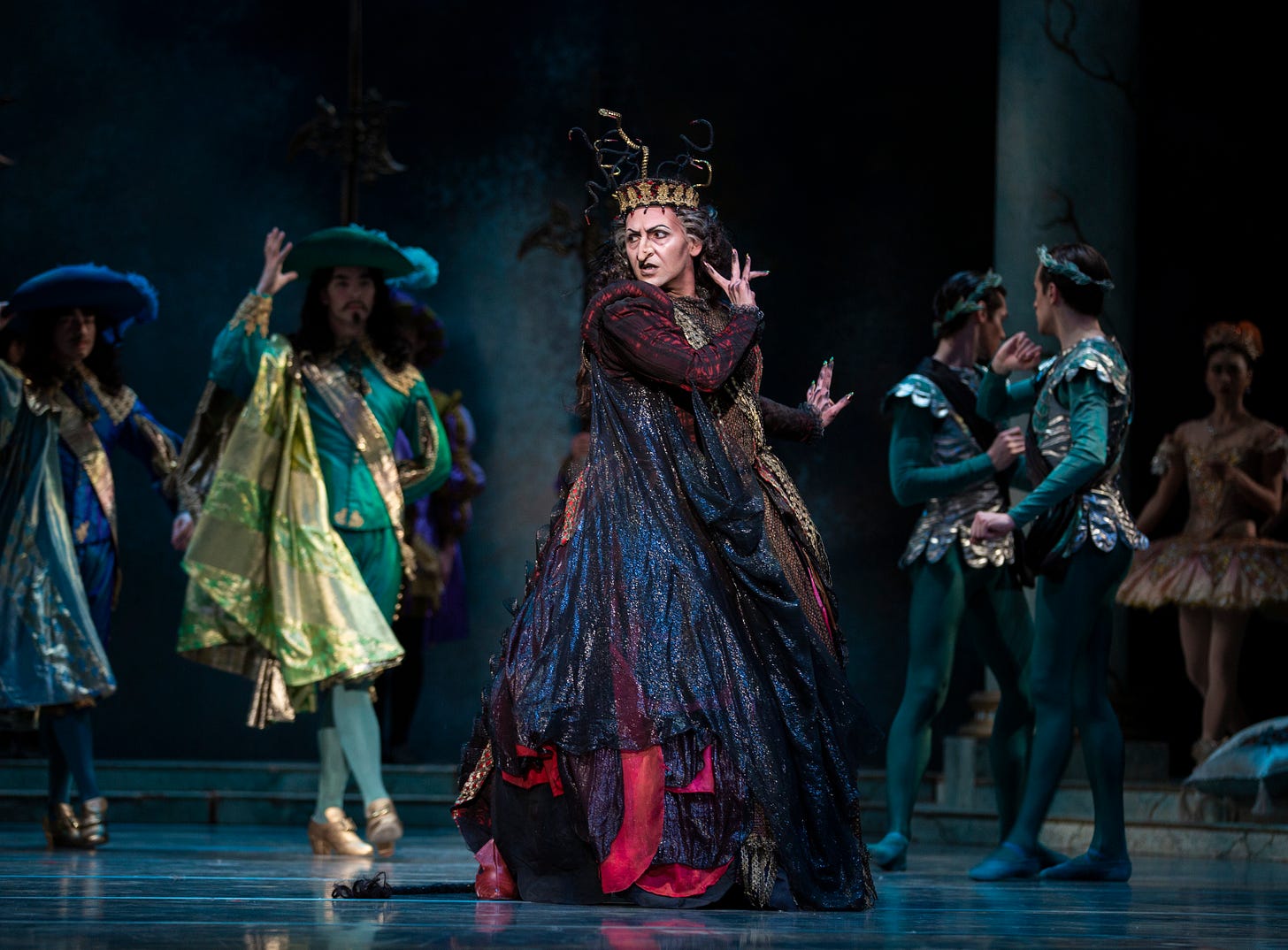
The 2025 Carabosse is a definite highlight of the ballet, but not its first bad ass portrayal.
In the old PNB production, choreographed by Ronald Hynd, Carabosse is supposed to be evil. Thinking back on Carabosses (Carabii?) I have seen and loved, most recently in 2019, Jonathan Porretta was a stager’s dream. In every role he danced during his career, Porretta chewed up the other dancers and spit them out. But his Carabosse, equal parts nasty and camp, was hilarious. That’s the Sleeping Beauty memory that lingers in my mind and Zsilas Michael Hughes more than lived up to that.
While we’re on the subject of bad ass Carabosses, almost a decade before Porretta upstaged the entire Sleeping Beauty cast, former PNB principal dancer Olivier Wevers (founder and artistic director of the contemporary company Whim W’Him) did much the same. He relished the Carabosse role, especially the dramatic freedom he found in it. “You really need to go over the top,” Wevers said in a 2010 PNB video. “It’s like Halloween every night!”
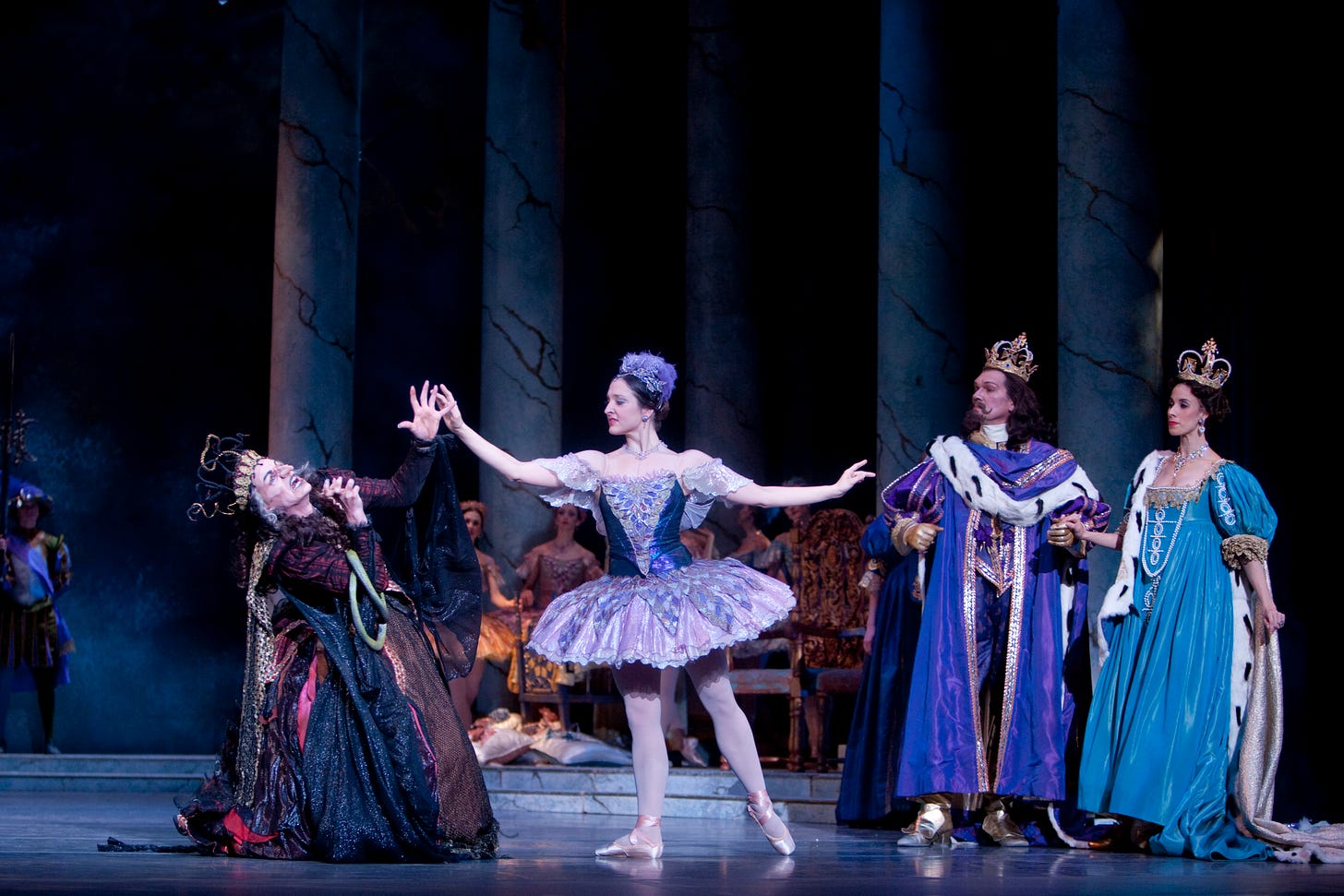
In the video, Wevers wears a huge, warty nose and clumps around exuding malevolence, but he’s no match for the power of the great Carrie Imler’s Lilac Fairy. (She also danced a mean Myrtha when PNB unveiled its latest production of Giselle in 2011. She still defines what it means to be a badass ballerina).
In 2025’s The Sleeping Beauty, Carabosse is less a bitchy woman trope and more steam punk fairy; there are no warts or evil witch stereotypes. Instead there’s a nifty mask, a dark fairy wings, and sleeve tattoos.
PNB’s new Sleeping Beauty is almost too much to digest in a single performance. Video projections and puppets, masks and Tlingit imagery, oh my!
Paul Tazewell’s costumes are almost over the top, especially the rich colors of Act 1 and Carabosse’s sparkles, reminiscent of Cruella DeVille from 101 Dalmations, according to a friend. And while I still don’t really understand why Marius Petipa had to populate the wedding with all those fairy tale characters, I loved watching dancers Destiny Wimpye and Noah Martzall as the White Cat and Puss and Boots.
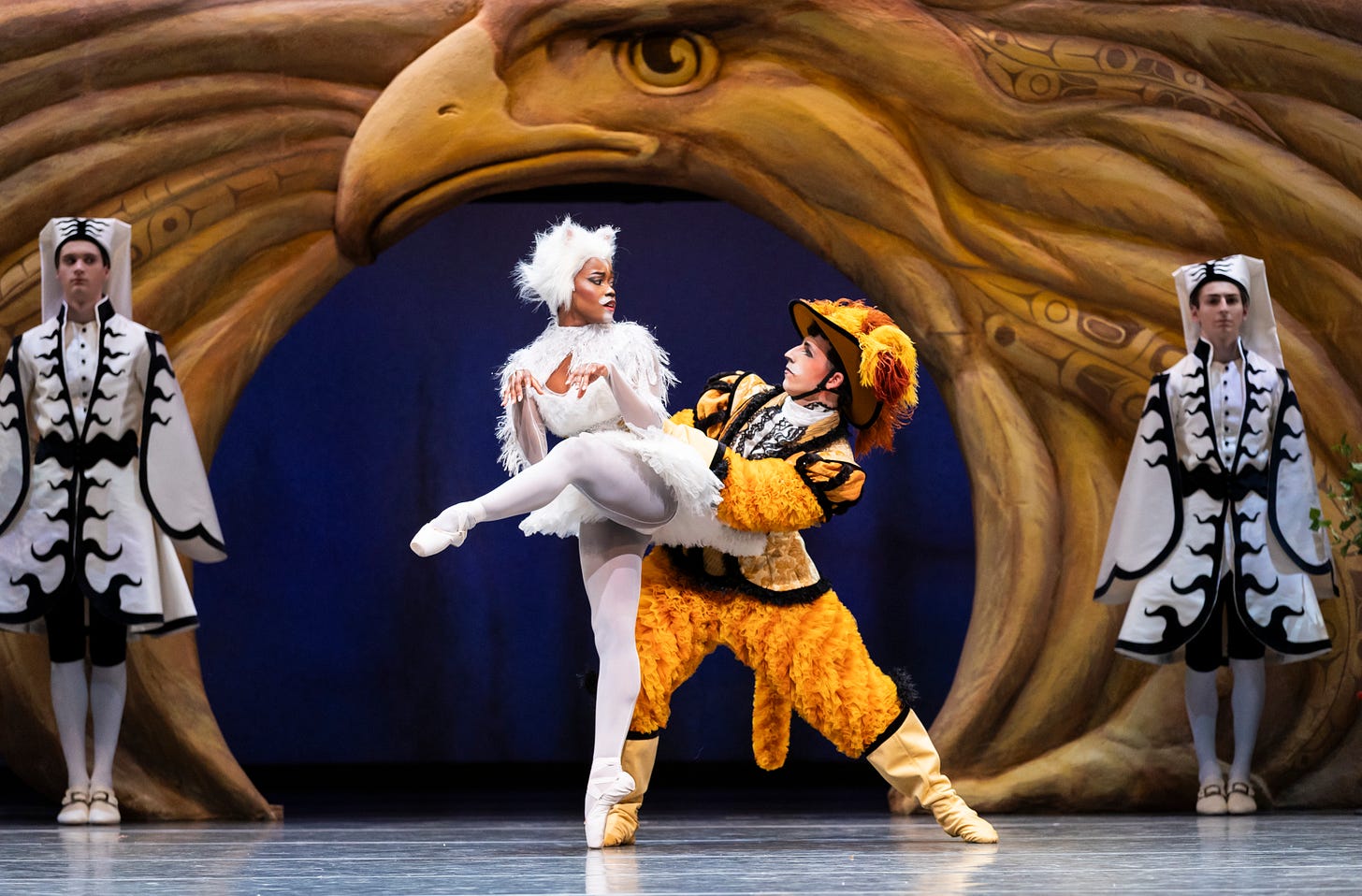
I never saw the woman I met in the lobby before the show, so I don’t know if her son enjoyed his ballet outing, but I did watch many kids with their parents in the audience and everyone seemed to have a good time. I guess we’ll find out if The Sleeping Beauty becomes the family magnet PNB is looking for. I know I’ll never turn away from a great bad ass. Carabosse forever!




